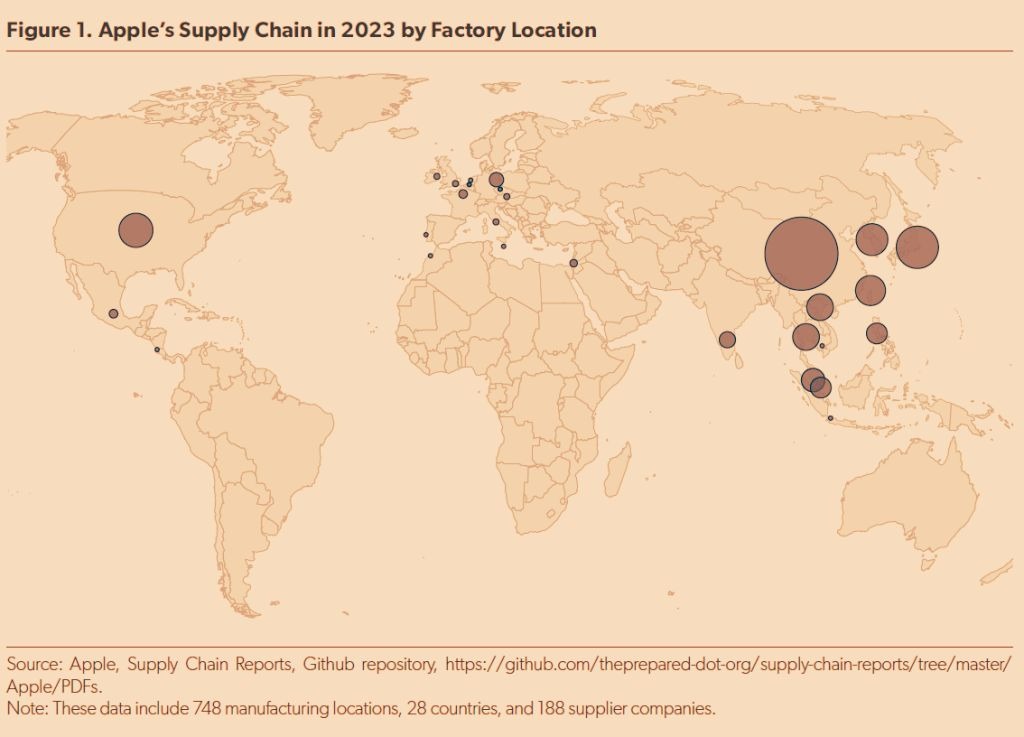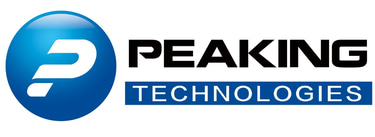How Apple’s Supply Chain Shakeup Can Help Chinese SMEs Grow Smarter
Discover how Apple’s global supply chain shift offers key lessons and new growth paths for China-based small electronics manufacturers in 2025 and beyond.
JoeZ
6/4/20255 min read


Apple is not just a tech giant—it’s one of the most powerful orchestrators of the global electronics supply chain. Over the past two decades, China has been at the heart of Apple’s manufacturing empire. But recent moves indicate that the tides are turning. From India to Vietnam, Apple is diversifying its assembly and component production footprint. For small and medium-sized electronics manufacturers (SMEs) in China, this shift isn't just an Apple problem—it’s a wake-up call.
This blog will explore the economic and geopolitical implications of Apple’s supply chain decisions and, more importantly, what SMEs in China’s electronics industry can do to remain resilient, competitive, and future-ready.
1. Apple’s Diversification Is Real—and It’s Accelerating
In the wake of trade tensions, COVID-19 disruptions, and growing geopolitical friction between the U.S. and China, Apple has taken steps to diversify its production base. Factories in India now assemble iPhones. Suppliers in Vietnam make AirPods and other peripherals. While China still accounts for the lion’s share of Apple’s production, the direction is clear: supply chain decentralization.
For SMEs that depend on Apple or Apple-tier customers (or rely on similar supply chains), this is a strategic signal. Apple’s decisions shape the movements of entire ecosystems—logistics, labor, component sourcing, and beyond.
2. Why Apple’s Shift Should Matter to Small Chinese Manufacturers
Many Chinese SMEs operate as OEMs (Original Equipment Manufacturers) that rely on a few major clients, often through multi-tier subcontracting. Apple's shift reveals several systemic vulnerabilities:
Overreliance on One Market: Too much dependence on China exposes global brands to geopolitical risk.
Single-customer dependency: Suppliers like Goertek saw massive revenue drops after losing Apple contracts.
Compliance burdens: Apple’s growing demands on ESG (Environmental, Social, and Governance) and supply chain traceability are raising the bar for all suppliers.
If Apple can move, others will too. For Chinese SMEs, preparing for a post-Apple or multi-market supply chain world is not optional—it’s essential.
3. Strategic Lessons from Apple’s Supply Chain Moves
A. Resilience Through Redundancy
Apple isn’t abandoning China. Instead, it’s building redundancy. SMEs should do the same.
Actionable Takeaway: Diversify your customer base and explore opportunities in emerging markets like Southeast Asia, the Middle East, or Africa. Start developing relationships with regional players, not just global giants.
B. Geo-Flexibility Is the New Competitive Advantage
Apple’s choice of Vietnam and India isn’t just about costs—it’s about political stability and regional hedging.
Actionable Takeaway: Consider establishing joint ventures or strategic partnerships outside China. Even a small satellite operation or warehouse in Vietnam or Malaysia could enhance your company’s flexibility in future client negotiations.
C. Vertical Integration and Specialization Matter
Suppliers that go beyond mere assembly—offering R&D, design support, or specialized manufacturing—are harder to replace.
Actionable Takeaway: Invest in niche capabilities or R&D support that makes your role in the supply chain irreplaceable. Don't just be a vendor; become a strategic partner.


4. The Opportunity Hidden in Apple’s Exit
It’s easy to view Apple’s diversification as a threat. But for proactive SMEs, it also opens doors:
Room to serve second-tier brands: As Apple pulls capacity out of China, more space and skilled labor open up for SMEs to serve new or fast-growing brands.
Flexible capacity: Brands with volatile demand need agile partners. Smaller manufacturers are better positioned than Foxconn-size giants to offer that agility.
"China +1" strategies need partners: Many global brands are not ready to fully leave China. They need local suppliers that can support hybrid logistics or cross-border coordination.
5. Sustainability: A Growing Differentiator
Apple has pledged to make its supply chain carbon neutral by 2030. This push for green manufacturing isn’t isolated. It’s the new standard—and many Chinese suppliers risk being left behind if they don’t adapt.
What You Can Do:
Implement clean energy options like rooftop solar panels.
Use lifecycle-based materials tracking (especially for plastics, metals, PCBs).
Publish a basic ESG or sustainability report—even if only a few pages long—to show buyers you're taking action.
Being “green” is no longer a PR play. It’s becoming a requirement for staying in the supply chain.
6. From OEM to ODM: Time to Climb the Value Chain
OEM work often brings low margins and high pressure. Apple’s shift shows that lower-value tasks are easiest to offshore. ODM and even OBM (Original Brand Manufacturer) models are safer.
How to Start:
Build a small internal design team.
Collaborate with startup clients to co-design product iterations.
Start by branding small accessories or less critical parts to develop brand experience and market testing ability.
Even if you don’t become the next Anker, these steps train your team to think beyond box-packing and quality control.
7. How to Attract the Next Generation of Clients
As supply chains shift, new clients (startups, mid-size brands, and even foreign SMEs) are looking for reliable, flexible manufacturing partners.
What Clients Want Now:
Transparent communication
Faster prototyping and shorter lead times
Digital integration (ERP, traceability, automated QC systems)
Certifications (ISO, RoHS, REACH, etc.)
Your To-Do List:
Upgrade your website and LinkedIn with a modern, clean look.
Show examples of case studies or development projects.
Highlight your flexibility—small batches, pilot runs, or rapid engineering response.
Invest in English-speaking staff or digital quoting tools.
These are not luxuries—they're basic signals of a modern, capable partner.
8. Real Stories: What Happens When You Rely on Apple Too Much
Chinese firms like Oflim and Goertek illustrate what happens when you rely too heavily on one tech giant. Losing Apple's business meant stock crashes, layoffs, and restructuring. Even Foxconn, the largest contract manufacturer in the world, is accelerating its overseas plans.
These stories underline the importance of control. If you don't control your market, your product roadmap, or your client base, you’re always exposed.
9. What the Future Looks Like for China-Based SMEs
Despite the shifts, China is not being "cut off." Apple and others are still expanding operations here. Why?
World-class infrastructure
Skilled labor force
Rich supplier ecosystem
Advanced logistics and export networks
What’s changing is this: if you’re just doing basic tasks, someone else—somewhere cheaper—can do it too. But if you have expertise, specialization, agility, and branding, your company has a strong future.
Conclusion: It’s Not the End—It’s a New Chapter
Apple’s supply chain strategy is a mirror to the world. It reflects where the risks, opportunities, and priorities are shifting. For China-based electronics SMEs, the message is clear: this is the time to evolve.
Whether it’s moving up the value chain, diversifying clients, improving ESG compliance, or digitalizing your operations—this is your moment to adapt. Global clients will continue to need China's manufacturing strength. The key is to offer what others can’t: speed, flexibility, expertise, and trust.
The world is shifting—but you don’t have to be left behind. Navigate the change. Shape your future.
